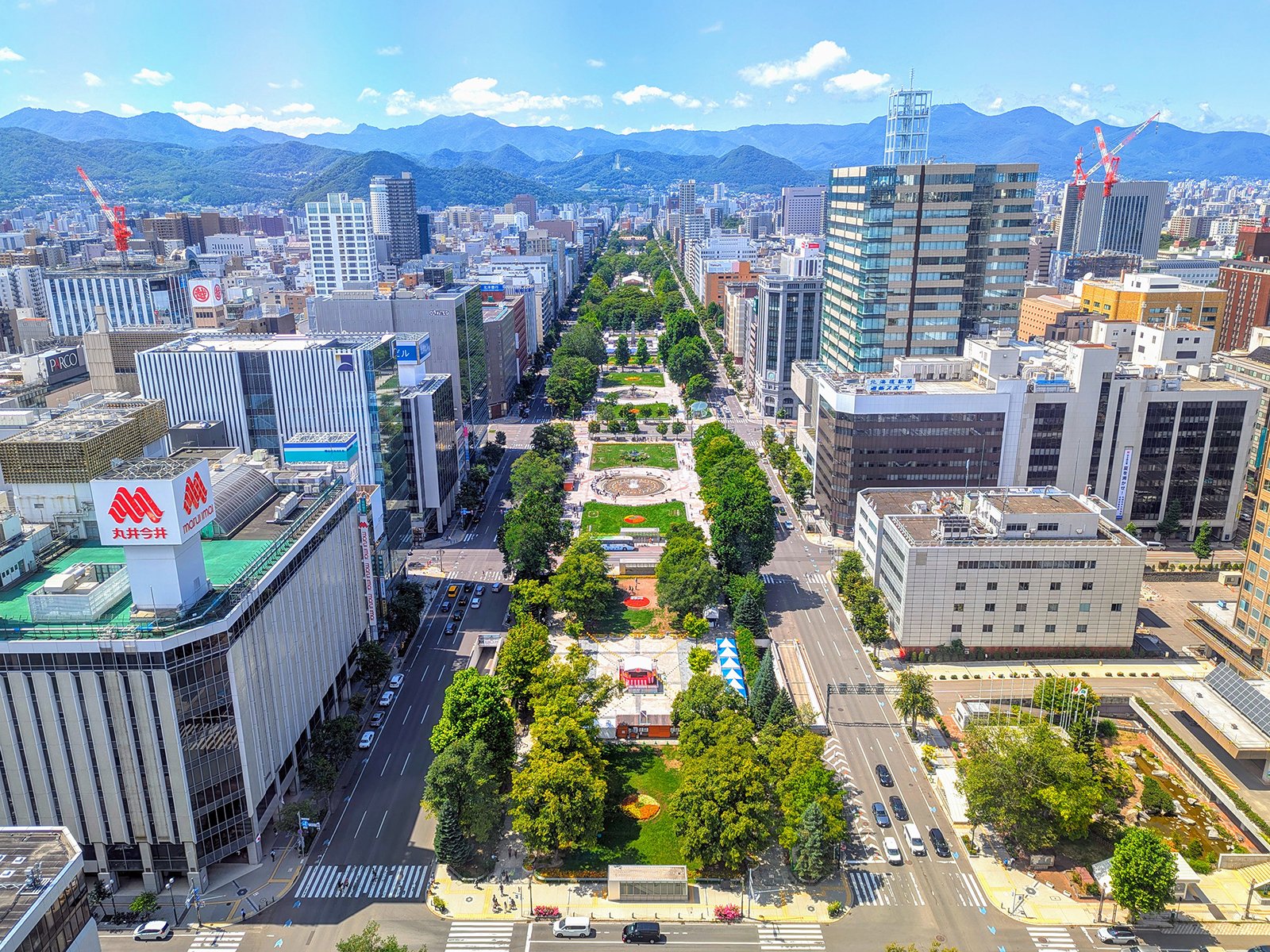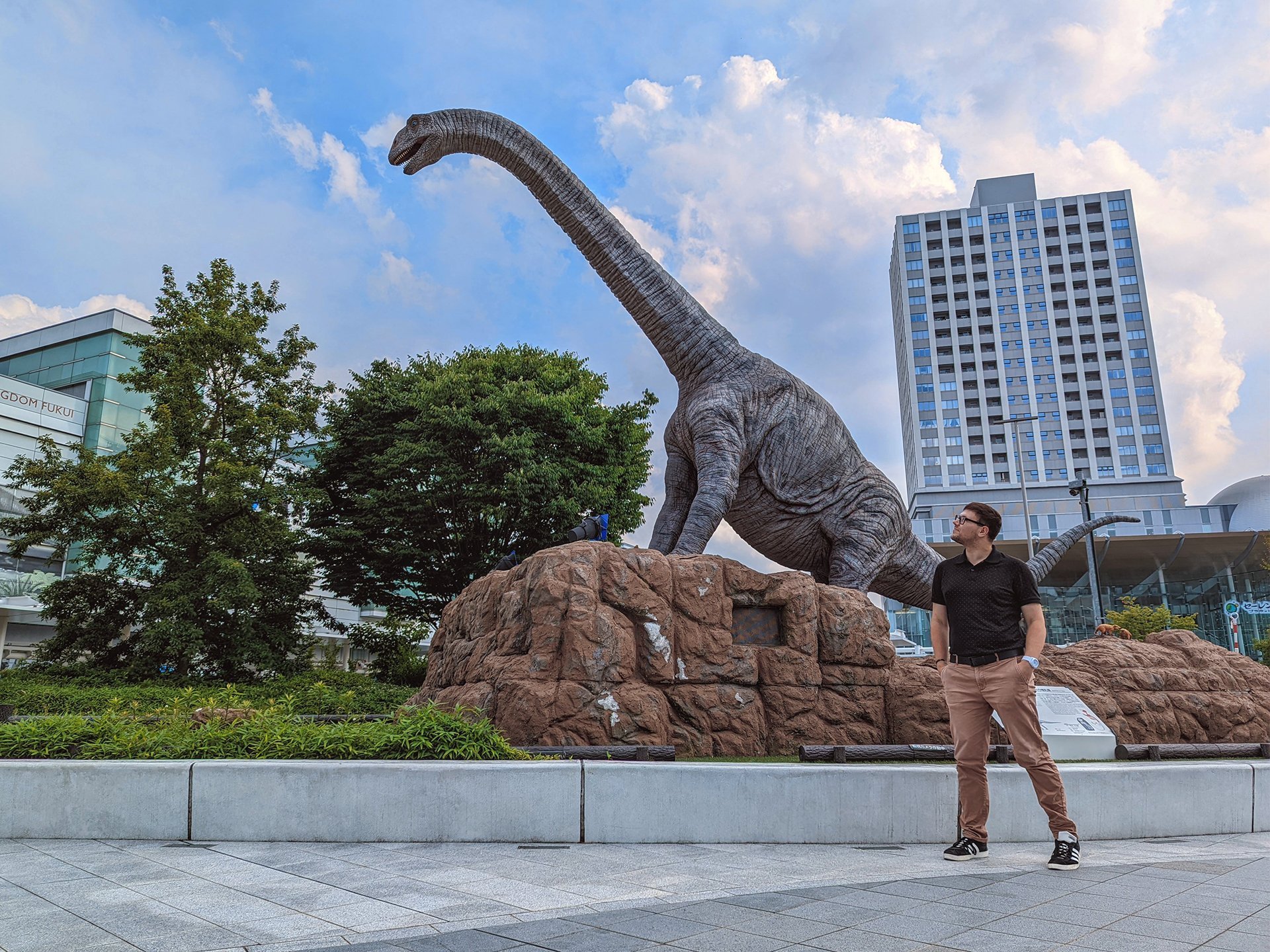Travel Guide: Sapporo

The island capital offers gorgeous nature, delicious food, and Ainu culture.
Cover photo: View of Odori Park and Mount Maru (Maruyama) from Sapporo TV Tower, Sapporo, Hokkaido, Japan (2024). Photo by Danny With Love.
Please click on an image for more details.
Intro
Sapporo is the capital of Hokkaido, Japan’s second-largest island. It’s known as the nation’s breadbasket, famous for agriculture and beautiful nature. Home to two million people, Sapporo is Japan’s fifth-largest city — the largest north of Tokyo.
While it’s a world-class skiing destination, Hokkaido is also a perfect summer retreat, boasting less rain, heat, and humidity than mainland Honshu. I spent twelve wonderful days in Sapporo this August. I enjoyed every minute! Sapporo ranks among my favorite cities I’ve ever visited thanks to its varied offerings of cuisine, nature, culture, shopping, and nightlife.
Sapporo also serves as a convenient base to explore the surrounding island. My favorite memories include watching Ainu dances at the National Ainu Museum in Shiraoi, exploring the sulfuric springs of Jigokudani (“Hell Valley”) in Noboribetsu, and wandering through the historic port town of Otaru.
I had wanted to visit Hokkaido for many years, but I was nervous about travelling the island without a car. I was pleasantly surprised to find the island’s transportation network quite extensive and reliable. I was able to visit most attractions by public transit — relying on just one private bus tour. Please read on for more details and travel tips.
History
Sapporo is one of Japan’s youngest cities, founded in 1868 as an administrative center for the annexation of Ezo (Hokkaido) by the Meiji Government. The name “Sapporo” (札幌) is derived from the indigenous Ainu language, meaning “Dry, Great River” in reference to the surrounding Toyohira river basin.
The Japanese name Hokkaido (北海道) translates to “Northern Sea Route.” While the island suffered American air raids in World War II, it was relatively unscathed compared to the rest of Japan; a Soviet invasion and occupation of Hokkaido was proposed, but ultimately canceled.
In 1972, Sapporo rose to international fame as the first city in Asia to host the Winter Olympics. It’s also known for its namesake beer, Japan’s oldest beer brand. The Hokkaido Shinkansen (bullet train) is expected to connect to Sapporo after 2030.
Colonialism & Ainu Culture
Many of Sapporo’s attractions are related to the island’s colonization by the Hokkaido Development Commission (Kaitakushi). With international support, the government agency oversaw the dispossession and assimilation of the indigenous Ainu people, while encouraging settlement by mainland Japanese (Wajin). The national government finally recognized the Ainu as an indigenous people in 2019. Today, their population is estimated to be at least 13,000.
Kaitakushi established both Sapporo Breweries and Hokkaido University (originally Sapporo Agricultural College). Kaitakushi’s North Star symbol remains synonymous with Sapporo Breweries and can be found on many historic sites, including Sapporo Clock Tower — the city’s oldest building and Japan’s oldest Western-style clock tower.
Sapporo’s best attraction is the Historical Village of Hokkaido, an open-air museum featuring over 50 relocated and restored buildings. Walking the grounds is like stepping back in time, through houses, shops, and farms. There’s a horse-drawn trolley too! Also, don’t miss taxidermied specimens of the extinct Ezo wolf at the Hokkaido University Botanical Gardens.
Ainu culture has grown more popular in recent years thanks to international campaigns for indigenous rights, depictions in pop culture like Golden Kamuy by manga artist Satoru Noda (野田サトル), and tourism promotion. I was surprised to learn that one of Ainu culture’s pioneer ethnographers is Polish: Bronisław Piłsudski, brother of former Prime Minister Józef Piłsudski!
I strongly recommend a visit to the National Ainu Museum in Shiraoi, opened in 2020. At the museum, visitors can watch dance performances, enjoy exhibits, wear traditional costumes, and taste Ainu cuisine.
Cuisine
Comparable in size and climate to the American state of Maine, Hokkaido is Japan’s breadbasket, famous for dairy, corn, potato, and melon. Local dishes include Sapporo (miso) ramen, soup curry, and Jingisukan (“Genghis Khan”) Mongolian barbeque. Pro-tip: as most Jingisukan restaurants serve Australian lamb, I suggest trying Hokkaido venison (deer meat) instead.
The historic alleyway Ganso Ramen Yokocho is especially popular with tourists — Shimijimi serves ramen with clams! I visited sushi chain Nemuro Hanamaru too, by local recommendation.
Sapporo is the headquarters of national dessert brands Shiroi Koibito (“White Lovers”) and Royce Chocolate — Nama (ganache) is my favorite. Both have factory sites available to visit. Shiroi Koibito Park features an hourly mechanical clock show and the Royce Museum boasts an impressive collection of hand-carved wooden bears, a popular Hokkaido craft inspired by the Swiss.
Most notably, the city is famed for Sapporo Breweries. Visitors can enjoy a free exhibit at the Sapporo Beer Museum or reserve a private tour. Afterwards, sample a flight of Kaitakushi, Classic, and Black Label draft beer — though they taste quite similar to me.
Nightlife
The downtown Suskino district offers some of Japan’s best nightlife. I enjoyed creative cocktails at Bar Nano Gould, with local ingredients! I also visited Slowboat, a jazz club founded by the late legendary pianist Ryo Fukui (福居 良).
LGBT+
Young Sapporo has a progressive reputation; back in 2017, it was the nation’s first major city to legally recognize same-sex partnerships. Sapporo Rainbow Pride is held in September. I especially recommend the transgender cabaret show Lala Too — reservations required. While not an explicitly gay space, I also had a great time at the macho bar Muscle Club.
Events
I danced Bon Odori during the Sapporo Summer Festival. The city’s biggest event is the annual Sapporo Snow Festival in mid-February, featuring ice sculptures and night illuminations. The city hosts frequent beer gardens.
Transportation & Accommodation
Sapporo is served primarily by New Chitose Airport (CTS), some 45 minutes away by train. It’s a two-hour flight from Tokyo or Osaka. CTS also offers international connections. The city’s extensive transport network includes metro, trams, and buses.
Most hotels are conveniently located between Sapporo Station and Suskino downtown. I recommend staying closer to the station for convenience or closer to Suskino for nightlife, but it’s only a 25-minute walk between them.
Top Attractions
Historical Village of Hokkaido & Hokkaido Museum
Sapporo TV Tower & Odori Park
Sapporo Beer Museum & Beer Garden
Susukino (nightlife district)
Shiroi Koibito Park (chocolate factory)
Tanuki-koji (shopping street)
Sapporo Clock Tower (heritage building)
Mount Moiwa Ropeway & Observation Deck
Otaru Canal & Art Base Museums in Otaru (Tiffany glass)
Upopoy: National Ainu Museum and Park in Shiraoi
Nakajima Park & Hohei Kan (urban park & heritage building)
Hill of the Buddha (shrine designed by Tadao Ando)
Hokkaido University Botanic Gardens (Ezo wolf taxidermy)
Jigokudani (“Hell Valley”) in Noboribetsu
Royce Chocolate Factory (Cacao & Chocolate Town)
Hokkaido Jingu (shrine)
Shirogane Aoiike (“Blue Pond”) in Biei
Farm Tomita (flower fields) in Furano
Maruyama Zoo (local animals)
Aoao Aquarium
Sapporo Fushimi Inari Shrine
Additional Ideas
The Former Hokkaido Government Office Building is currently under renovation, until 2025. Nearby hot spring towns Hoheikyo Onsen and Jozankei Onsen are also popular. I recommend a visit to southern Hakodate, the historic port of entry to the island.





























